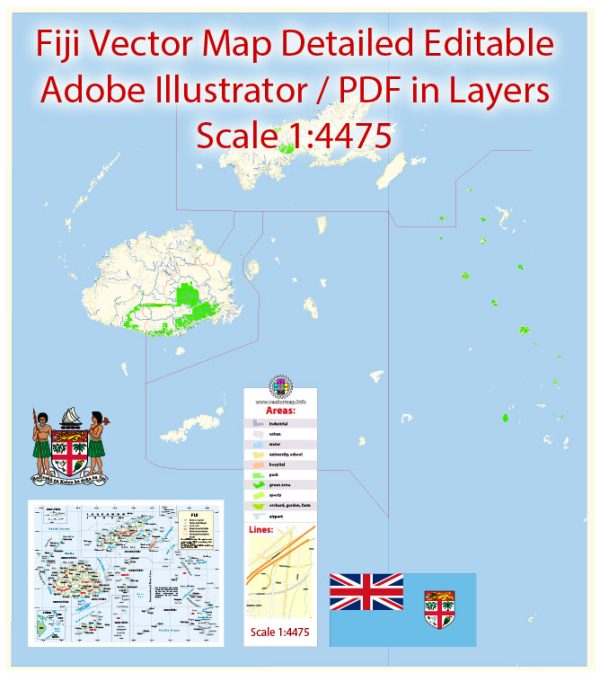Fiji, an island nation in the South Pacific, has a history of urban development that reflects its unique geographical and cultural context. The development of urban areas in Fiji can be traced through different periods, influenced by colonialism, economic shifts, and the country’s move towards independence. Here is a general overview of Fiji’s history of urban development:
- Pre-Colonial Era:
- Before the arrival of European colonizers, Fijian society was primarily rural and organized along clan lines.
- Villages were the primary settlements, and people engaged in agriculture, fishing, and other subsistence activities.
- Colonial Period (Late 19th to Mid-20th Century):
- The late 19th century saw the arrival of European colonial powers, primarily the British. This period marked significant changes in land use and settlement patterns.
- The colonial administration established administrative centers and ports, leading to the emergence of urban areas.
- Suva, the capital, and Lautoka, a major port, became focal points for colonial administration, trade, and commerce.
- The British influence on urban planning and architecture is evident in some of the colonial-era buildings in Suva.
- Post-Independence Era (Late 20th Century):
- Fiji gained independence from British colonial rule in 1970. This period saw continued urbanization and the growth of existing urban centers.
- Suva remained the capital and continued to develop as an administrative and commercial hub.
- The urbanization trend was fueled by rural-to-urban migration as people sought economic opportunities in the growing urban areas.
- Contemporary Period (21st Century):
- Urbanization continued in the 21st century, with the expansion and modernization of urban infrastructure.
- Nadi, another major town, also experienced significant growth due to its international airport and tourism-related activities.
- Urban planning and development have become crucial as Fiji grapples with the challenges of population growth, infrastructure demands, and climate change.
- Challenges and Opportunities:
- Fiji faces challenges related to urbanization, including housing shortages, traffic congestion, and environmental concerns.
- Efforts have been made to address these challenges through sustainable urban planning, infrastructure development, and community engagement.
- The tourism industry, a major economic driver, has influenced urban development, particularly in areas catering to visitors.
Fiji’s history of urban development is characterized by a transition from traditional rural lifestyles to the establishment and growth of urban centers influenced by colonial and post-colonial dynamics. The ongoing development efforts in Fiji aim to balance economic growth with environmental sustainability and social well-being.


 Author: Kirill Shrayber, Ph.D.
Author: Kirill Shrayber, Ph.D.